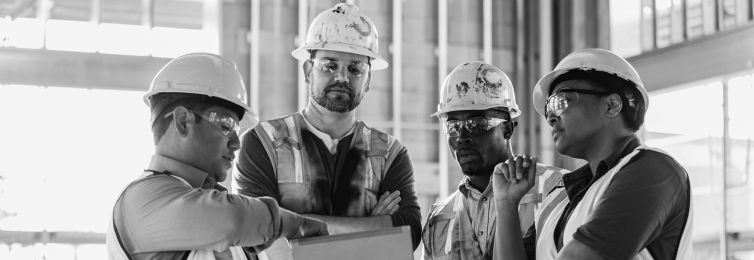What does it mean to have a culture of safety?
A good safety culture creates an environment that influences workers to want to do the right thing—even when nobody’s watching. It promotes and recognizes the safe work of employees. It makes clear to employees that doing a good job means stopping work if they feel unsafe.
Every company already has a culture of safety. However, many owners are frustrated because it isn’t the culture they want or envisioned. Often safety begins as a top priority, however priorities change with the needs of the moment.
To have an effective safety culture, business owners must make safety a core principle of the company. Holding safety as a core principle means safety must be considered in all company choices, receiving equal weight with quality and production on the job-site.
No matter what state your company’s safety culture is in, there are always ways to improve and further develop your team’s approach to safety.
How can a company change its safety culture?
This 10-step list will help you analyze and improve your safety culture:
- Get a clear understanding of why you want to change your culture and what you want your culture to look like. Having a clear vision of what you want will provide you direction on how to begin. When things get tough, our instinct is to go back to our past behaviors. The WHY behind the change will keep you moving forward.
- Develop a mission statement. Your mission statement explains how your business is making your community a better place. It needs to be something everyone in your organization can get behind, and it should speak to why they come to work each day. When you communicate how your company serves its customers, you put purpose behind the work.
- Develop value statements. Define what core principles will direct your culture and support your purpose. Share these value statements with your team and explain that you expect everyone to act on the value statements in all day-to-day activities. Be ready to follow through. Examples of core principles include honesty, integrity, respect, quality consciousness, and safety focus.
- Begin implementing proactive accountability. When things go wrong, find the facts so a solution can be implemented. Question the process, direction, and equipment before blaming a member of your team. You can read more about proactive accountability in part two of this series.
- Create a group of the most influential employees. These employees must buy into the purpose and principles of your organization. They will be the face of your new safety culture and lead by example.
- Develop short-term and long-term visions with measurable goals. You may need to perform some baseline testing to determine reachable numbers. The main goal is to find which areas of safety you want to focus on, and then to establish goals in those areas so you can measure your success or failure. It is not only about unsafe conditions but also about understanding which behaviors lead an employee to work in or around unsafe conditions. Determine leading indicator goals that will set you up for success.
- Develop a strategy to reach your goals. What changes are needed to reach your goals? Seek feedback from everyone on your team so all members of your organization feel represented, and make sure you have buy-in from those influential employees who will serve as role models.
- Establish ways to market these goals and strategies. Make sure all of your employees know what is going on and why. Provide regular feedback on progress.
- Measure and adjust your goals regularly. Identify what is working and what is not. What are the challenges being faced in the real world, and what is the best way to proceed? Not everything will be brilliant. Get constant feedback from your employees and be ready to adjust your methods.
- This is a continuous and ever-improving process. No person and no organization is perfect, but you can continue to find new ways to support your team.
What else can you do to get your employees onboard?
None of this will work if your employees feel like they are being manipulated. Employees must know that you care about them personally. They must know that you are not making these changes to improve your bottom line but to make your organization a better and safer place to work. The improvement in your bottom line will be only a byproduct of these changes.
No matter how big your organization is, you must get face time with the front line. Remember their names. Show up onsite and talk to your workers personally. Invest in their lives. Get their feedback and show them how valuable they are to your company. These changes are not focused on how to improve your organization but on how to improve each individual who works in your organization. The best companies are not the best because they have the best equipment or processes. They are the best because they have the best people.
You’ll find it is easier to effect cultural change when you focus on improving your employees’ lives and making their jobs and decisions easier. Encouraging transparency, honesty, and integrity is a sure-fire way to improve work environments. The job-site is no different.
Get started.
These efforts may seem overwhelming, especially if you want to change the culture of your entire company. Start small by focusing only on safety culture. Take baby steps to develop goals and strategies, implement proactive accountability, be consistent, and get more face time with your employees. Over time, you will start seeing this spread throughout your organization. Remember, if you can change the perspective of just one employee a day and you have 500 employees, in less than two years you will have the culture you desire.
More information on these concepts can be found in the book 6-Hour Safety Culture by Tim Autrey.
Content reviewed 8-2022.




 Find an
Find an